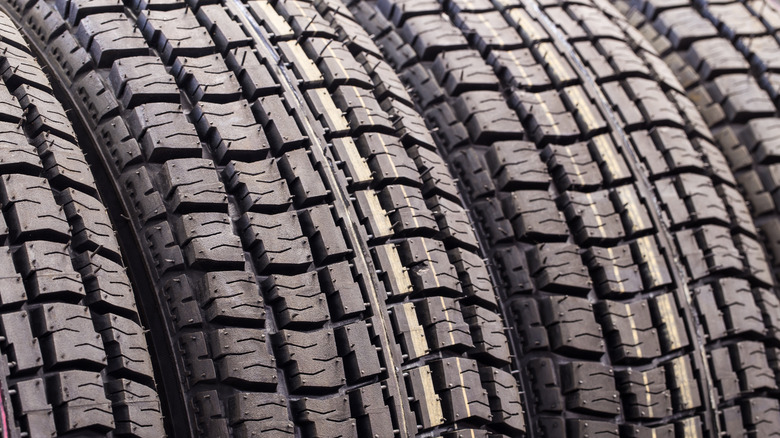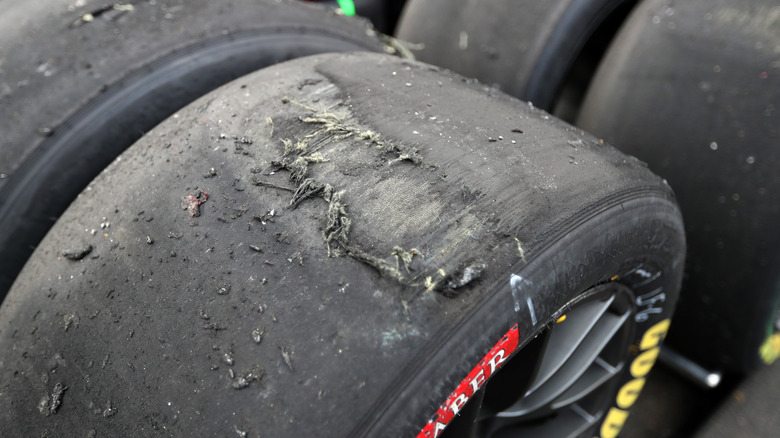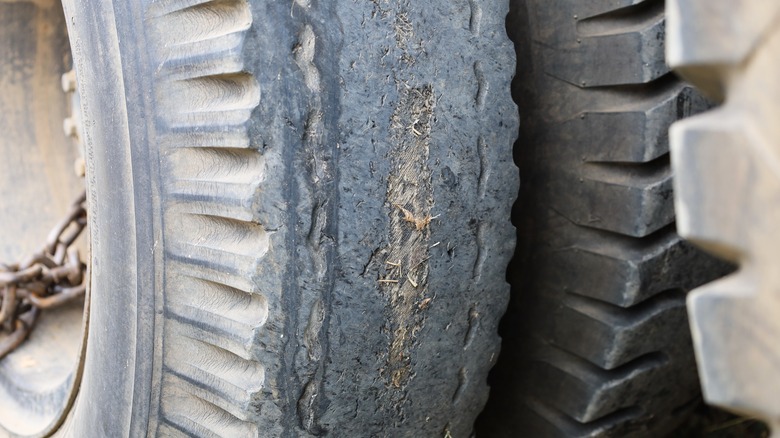If You See This On Your Tires Get Them Replaced ASAP
Every driver has a uniquely different experience with their vehicle of choice, but each car owner has at least one thing in common — They all have to watch out for the signs of and manage the wear and tear of crucial components.
The FWHA reports that, in 2021, vehicles in the United States covered more than three billion miles. This, all told, is an astronomical amount of work being put in by tires of all sorts. As vehicle components go, they're the most subject to wear on the roads (literally) and among the most potentially dangerous if neglected. There's one particular urgent warning sign that can absolutely never be ignored: tire cords.
Let's take a look at exactly what tire cords are, how to spot them, and what they mean for your vehicle and its current condition. The safety implications of tire cords, it must be stressed, are severe.
What are tire cords?
Tire maintenance is a must. Rotating tires to ensure an even wear is a critical aspect of that. Naturally, though, there's no outright preventing such wear, and it's crucial to replace tires when necessary.
The UK's Sturgess of Leicester reports that, in addition to obvious factors like damage to a tire, they should be changed if the tread depth falls below 1.6mm, the legal minimum. In the US, the Department of Transportation also notes that tires must have wear indicators "to enable a person inspecting the tire to determine visually whether the tire has worn to a tread depth of 1.6 mm." If a tire is allowed to wear severely, the very tire cords may be visible.
These lengths of cord or wire are part of the inner body of the tire, beneath the tread that bears the brunt of the wear of the road. A blend of steel and softer textiles lies beneath the seemingly simple rubber surface of the tire, from the wiry bead that ensures it connects to the body of the vehicle to the textile body plies. The cords help the tire to retain its shape beneath the softer tread. The cords support the tread and sustain the tire's form, essentially, and if they're visible on the surface, the tire is worn to a dangerous degree.
The implications of visible tire cords
If the cords are visible, a tire can be considered to have been worn bald. This can happen to one tire or several, and if just one is affected, it may mean that you haven't been fastidious enough with your tire rotation (allowing the affected tire to wear much more than the others) or that they aren't correctly aligned. These tires can be unsightly, but there's also much more to worry about than just that.
Tires worn all or almost all the way down risk ineffective braking and hydroplaning, as these things are heavily influenced by traction (afforded by that nifty pattern on the treads of tires).
Legally, too, drivers can find themselves in a lot of danger for driving on tires with exposed cords. In California, for instance, Shouse California Law Group reports that Vehicle Code 27465b CVC notes, "no person shall use on a highway a pneumatic tire on a vehicle axle when the tire has less than the following tread depth," declaring this to be 1/8th of an inch on front tires and half that in the case of rear tires.
With this in mind, visible tire cords can be taken as an urgent warning sign that the tire in question must be replaced. This is the case regardless of the brand of manufacture.


